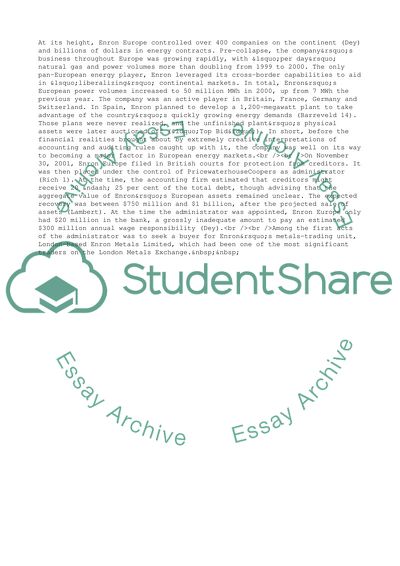Cite this document
(The Story of the Enron Europe Company Essay Example | Topics and Well Written Essays - 2500 words, n.d.)
The Story of the Enron Europe Company Essay Example | Topics and Well Written Essays - 2500 words. https://studentshare.org/business/1713636-enron-europe
The Story of the Enron Europe Company Essay Example | Topics and Well Written Essays - 2500 words. https://studentshare.org/business/1713636-enron-europe
(The Story of the Enron Europe Company Essay Example | Topics and Well Written Essays - 2500 Words)
The Story of the Enron Europe Company Essay Example | Topics and Well Written Essays - 2500 Words. https://studentshare.org/business/1713636-enron-europe.
The Story of the Enron Europe Company Essay Example | Topics and Well Written Essays - 2500 Words. https://studentshare.org/business/1713636-enron-europe.
“The Story of the Enron Europe Company Essay Example | Topics and Well Written Essays - 2500 Words”. https://studentshare.org/business/1713636-enron-europe.


